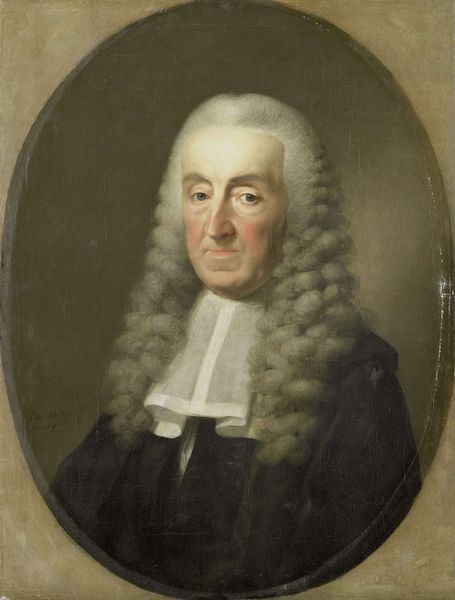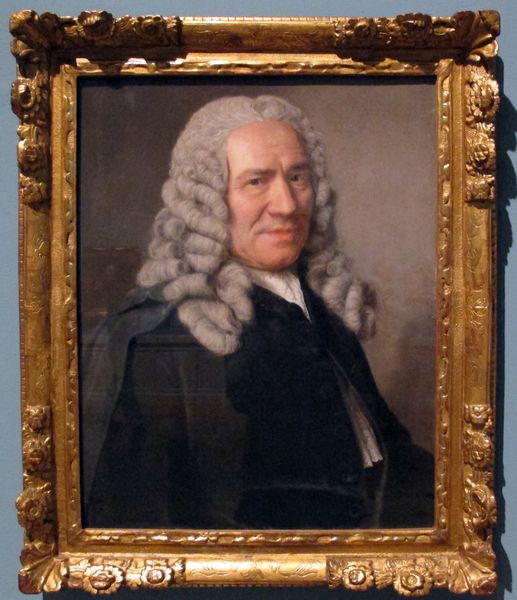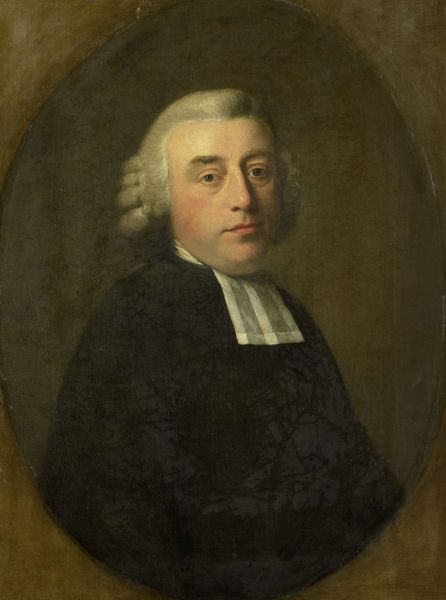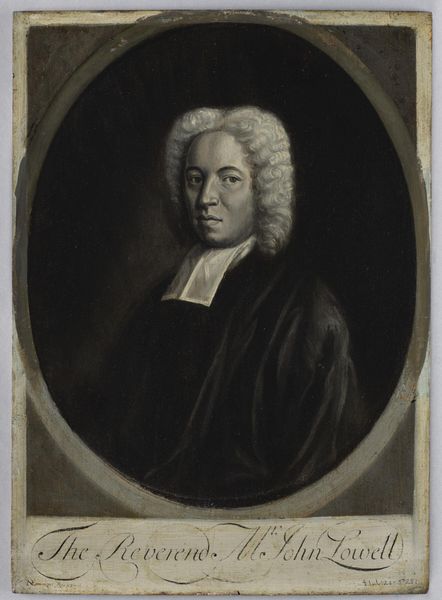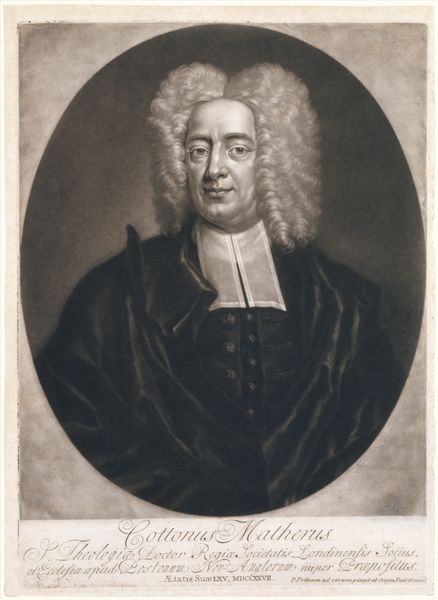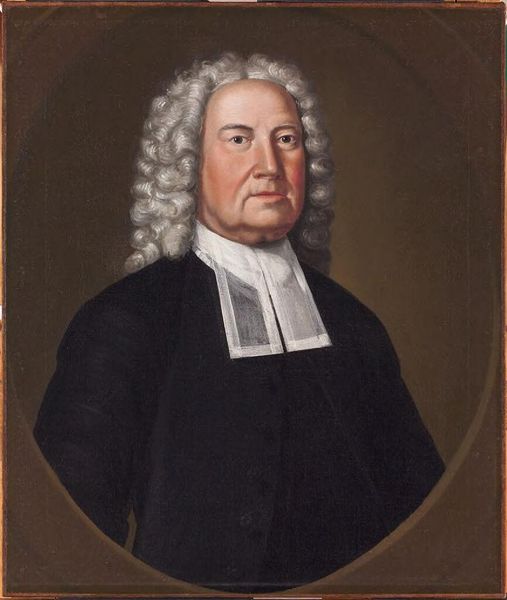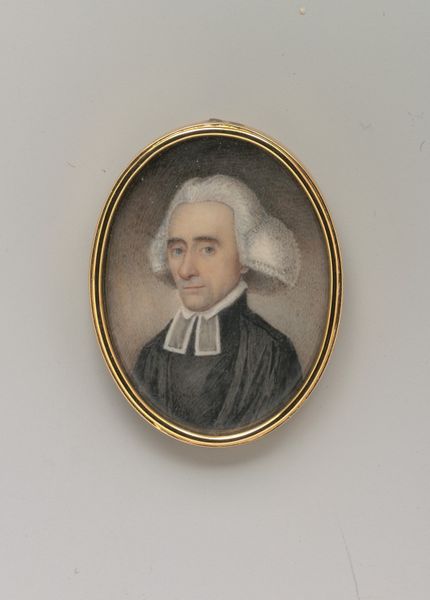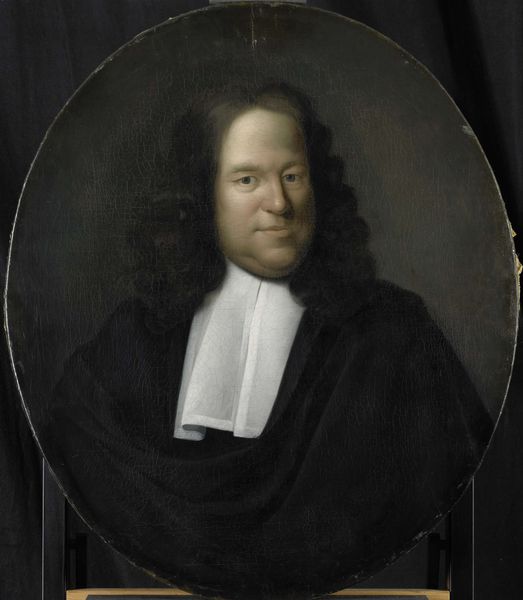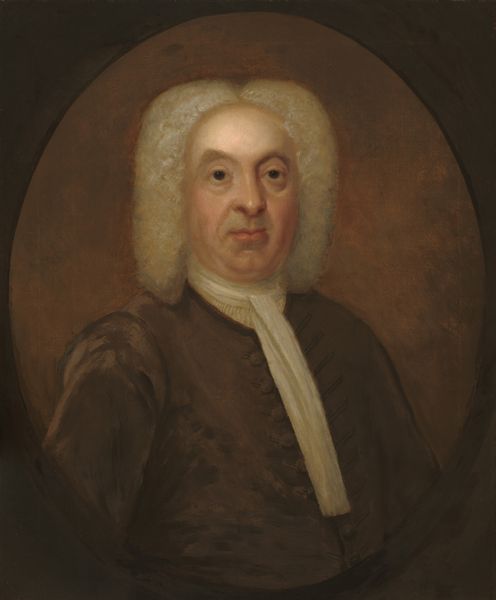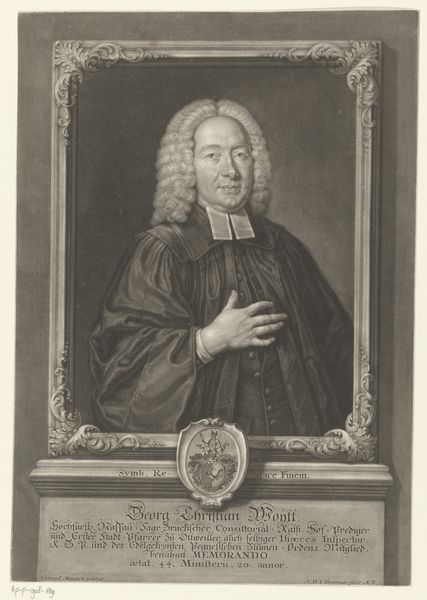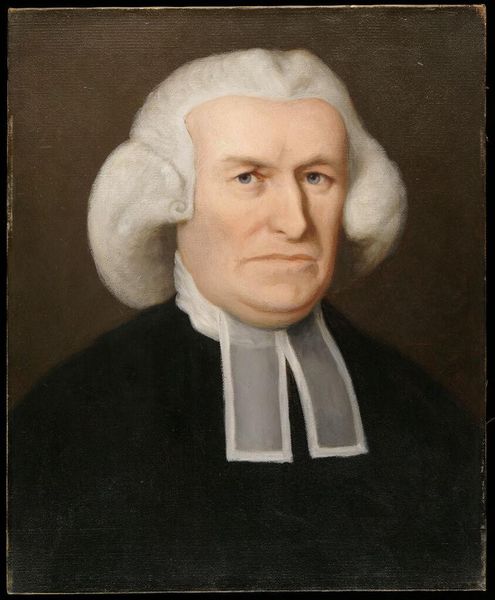
painting, oil-paint
#
portrait
#
baroque
#
painting
#
oil-paint
#
oil painting
#
history-painting
#
academic-art
Dimensions: 11.5 cm (height) x 9 cm (width) (Netto)
Curator: Looking at this portrait, one is immediately struck by the sheer weight of the wig, almost swallowing the man's features. Editor: Indeed. What we have here is "Mandsportræt," an oil painting likely created between 1726 and 1748. It resides in the collection of the SMK, Statens Museum for Kunst. Curator: The execution is rather interesting; look at the interplay of light across the canvas. The wig, especially, has an almost cloud-like quality, doesn't it? It seems to define the sitter more than his own facial expression. The artist skillfully utilized oil paint, evident in the textures. Editor: Absolutely, and it points to a very specific historical and economic context. Consider the materials. Oil paint, pigments, canvas—these represent specific trades and global networks of trade. That wig? A symbol of power, of course, but also of an industry, a whole sector dedicated to status display. How does this portrait fit within the history of academic art and the Baroque style? Was its commission driven by social status? Curator: The cool detachment of the gaze contrasts rather sharply with the flamboyant wig. What narrative can we construct based on his facial expression and material cues? What about that deep, somewhat restrained palette and its symbolism? Editor: And how would its original frame affect its display, both visually and socially? Was this made for public consumption or for private viewing? Considering production methods and artistic consumption opens up paths into social significance of Baroque portraiture, rather than concentrating only on pure, aesthetic interpretations. The level of refinement is indicative of both wealth and status, underscoring hierarchies through formal representation. Curator: So, on one level, it’s art; on another, it's a clear manifestation of its society's power structures and production capabilities, each detail imbued with complex socioeconomic significance. Editor: Indeed. A fascinating reminder of how materials and making speak volumes about status and craft during that historical period.
Comments
No comments
Be the first to comment and join the conversation on the ultimate creative platform.
